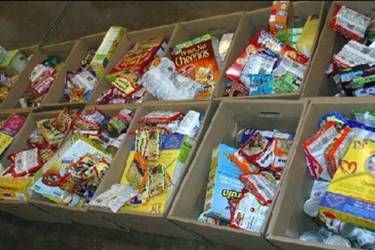Escalating Costs Of Paper & Packaging Will Force Manufacturers To Modify Operations
By Isaac Fletcher, contributing writer, Food Online

Due to rising costs for upstream suppliers and an increased demand for shipping, the prices of paper and packaging products are rising, which will force food manufacturers to take a closer look at both their operations and suppliers
Wood pulp and paper are two of the specific input costs that are increasing, with 2011 marking the highest price point for wood pulp in more than thirty years. Even though prices have dipped somewhat in recent years, global prices still remain at historically high levels and are expected to rise at a rate of one percent per year through 2017. Rising costs of inputs create a snowball effect. For example, as the price of wood pulp rises, the price of paper increases, with an expected price increase of 2.1 percent to 2017.
White Paper: A New Direction For Hygienic Secondary Packaging
The issue is further compounded by growing disposable income. With an expected growth rate of 2.3 percent through 2017, increases in disposable income generate more demand for packaging materials as consumers spend more on discretionary items that are often packed in paper-based materials. Rising costs of wood pulp and paper will affect other areas of paper-based packaging, such as corrugated boxes, molded fiber packaging, and packaging services.
Corrugated Boxes
Now until 2017, the price of corrugated boxes is expected to rise at an annualized rate of 3 percent. With the rising price of inputs, box manufacturers are forced to increase box prices to maintain profit margins. Typically, a rise in price will result in a drop in demand, but with businesses and consumers demanding more corrugated boxes, the price hike will most likely not result in slouching demand.
There are a limited number of options that firms can use to replace corrugated boxes, as few packaging mediums provide the same balance between cost and functional strength. Because there are few substitutes and buying power is hindered, buyers should aim to gain leverage by taking advantage of market specialization and switching costs. Corrugated boxes do not require much experience or expertise to manufacture or distribute, so buyers can likely find other manufacturers to satisfy their needs at minimal risks. With numerous vendors in the market, the ability of buyers to switch will drive price-based competition among suppliers, forcing prices down.
Labels Vs. Direct Coding Of Corrugated Cases And Cartons
Molded-Fiber Packaging
This type of packaging is created from paperboard and newsprint, commonly used to form egg cartons, other food containers, and various molded packaging supplies for shipping. The price of molded-fiber packaging is predicted to grow at a rate of 4.2 percent through 2017. The factors previously mentioned play a role in the rising prices, as will growth in the domestic population. A growing population will require more food, which is often placed with molded-fiber packaging.
Unlike corrugated boxes, molded-fiber packaging has a high number of substitutes, such as expanded-polystyrene packaging. The availability of substitutes gives buyers some negotiating power, as they have alternative options for their packaging needs.
Packaging Services
Suppliers of packaging services tend to the manual packaging and machine packaging needs of their clients. Prices for packaging services are expected to grow at an annualized rate of 2.5 percent through 2017. Increases in average wages in the market and rising prices of packaging supplies contribute to the overall price hike in packaging services. To combat these prices, buyers can conduct in-depth, cost-benefit analysis to determine whether packaging services should be performed in house or by an outside provider.
